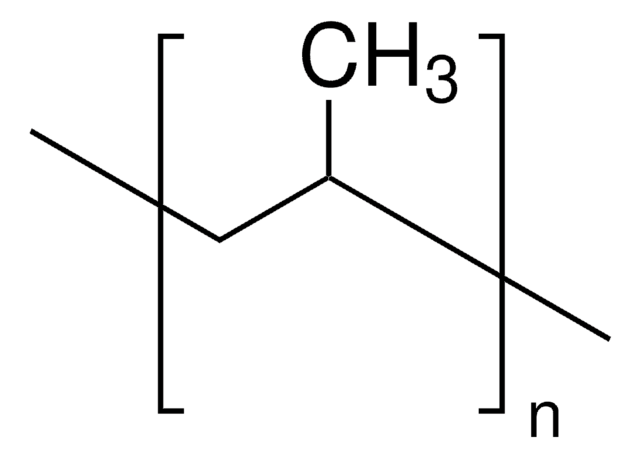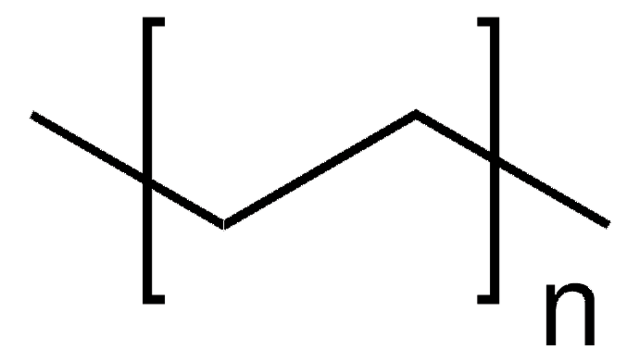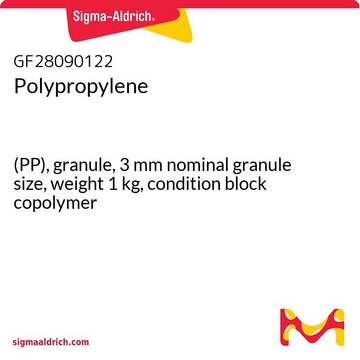ERMEC591
Polypropylene (PP)
ERM®, certified reference material
Sinónimos:
Polypropylene
About This Item
Productos recomendados
grade
certified reference material
agency
ERM®
manufacturer/tradename
JRC
density
0.9 g/mL at 25 °C (lit.)
application(s)
chemicals and industrial polymers
format
neat
storage temp.
−20°C
SMILES string
CC=C
InChI
1S/C22H42O3/c1-2-3-4-5-11-14-17-20-21(25-20)18-15-12-9-7-6-8-10-13-16-19-22(23)24/h20-21H,2-19H2,1H3,(H,23,24)/t20-,21+/m1/s1
InChI key
NSYDMBURIUSUDH-RTWAWAEBSA-N
¿Está buscando productos similares? Visita Guía de comparación de productos
Analysis Note
ERMEC591
Legal Information
Storage Class
11 - Combustible Solids
wgk_germany
WGK 3
flash_point_f
Not applicable
flash_point_c
Not applicable
Elija entre una de las versiones más recientes:
Certificados de análisis (COA)
Lo sentimos, en este momento no disponemos de COAs para este producto en línea.
Si necesita más asistencia, póngase en contacto con Atención al cliente
¿Ya tiene este producto?
Encuentre la documentación para los productos que ha comprado recientemente en la Biblioteca de documentos.
Los clientes también vieron
Nuestro equipo de científicos tiene experiencia en todas las áreas de investigación: Ciencias de la vida, Ciencia de los materiales, Síntesis química, Cromatografía, Analítica y muchas otras.
Póngase en contacto con el Servicio técnico



